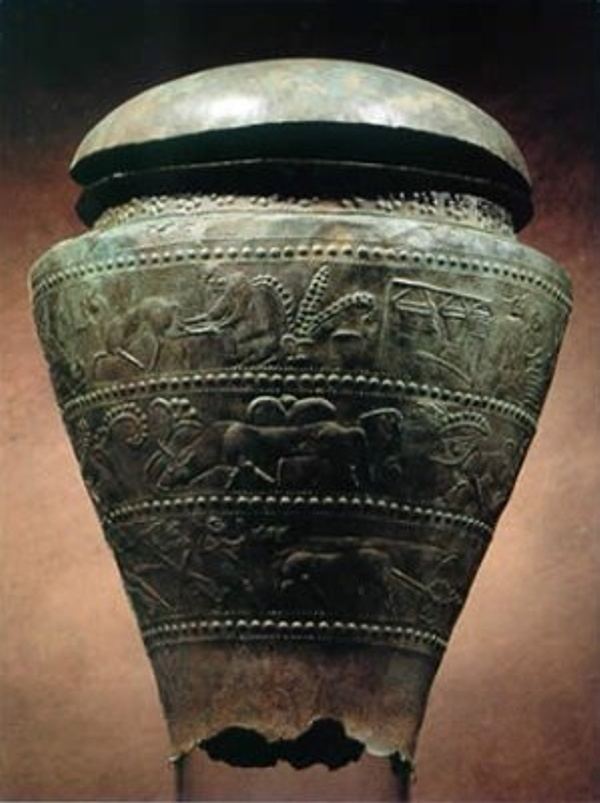 | ||
The Este culture or Atestine culture was a Iron Age culture existing from the late Italian Bronze Age (10th-9th century BC, proto-venetic phase) to the Roman period (1st century BC). It was located in the present territory of Veneto in Italy and derived from earlier and more extensive Proto-Villanovan culture. It is also called "civilization of situlas", or paleo-venetic.
The culture is named after a proto-urban settlement in the Po Valley (North Italy). The city of Este was originally situated on the river Etsch, which changed its course in 5th century; it was a center of metalworking. The settlement evolved in the beginning of the 1st century BC at the cross-way of important traffic routes. Essentially only the cremation cemeteries with its rich burial goods remained.
Este culture existed, next to the Villanovan Culture in the Bologna area and the Golasecca culture in the West of the Po Valley, influenced by the urnfield culture parallel to the Hallstatt period. Este imparted artistically and technical incitation of the Hallstatt region to the south and Etruscan-Grecian elements to the north. Este was the center of the so-called situlae art. Especially the situla decorated with animal and ribbons of figural shapes are characteristic. The most significant example is the Benvenuti-Situla (600 BC).
The evolution of the bronze foils works can be traced back until the end of the 4th century BC. Este culture survived the invasion of the Celts and their successors, the Veneti, until it was absorbed in the Roman Empire.
Several archaeological discoveries give the evidence that Este was an important centre of Venetic culture from the 7th to the 4th century BC. They had a great shrine to the good or goddess Reitia and a school for scribes. Archaeologists found, next to small bronze statues, tools, vases and money, 200 inscriptions in the Venetic script and the so-called Alphabet Tablets.
Four phases are distinguished; Este I (from 900-750 BC), Este II (from 750-575 BC) has an individual character, Este III (from 575-350 BC) is the climax corresponding to Certosa, and Este IV (from 350-182 BC) shows Celtic influences.
The Este culture is referred to the precursor of the Veneti (ital. Paleoveneti). The Veneti formed a buffer between the Illyrians, whose tribal area was located in the Balkans to the East of Trieste, and the Celts in the Po Valley. They had their own language and culture, which became more and more open to Greek influence. The Veneti continued the tradition of the Este culture, when it expired in Este. In Veneto a modified figural art exists until today.
